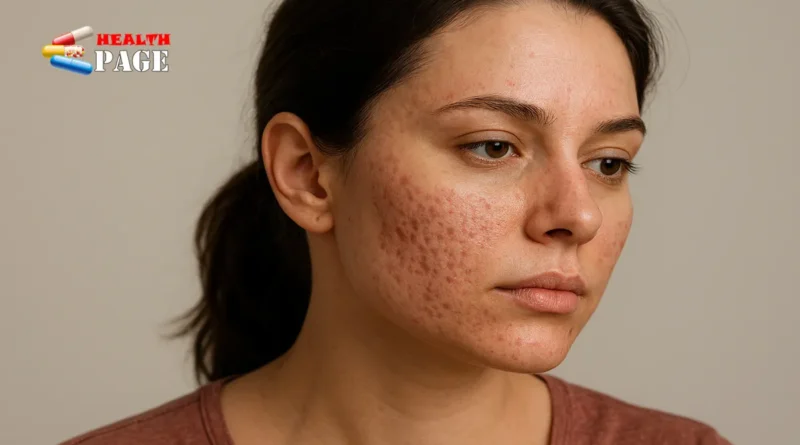How to get rid of acne scars ?5 Simple methods
If you’ve ever asked yourself “how to get rid of acne scars,” you’re not alone. Acne scars can feel like a stubborn reminder of a difficult skin chapter, and they can hit your confidence. The good news: there are simple, practical ways to improve the look of acne scars — some you can start at home, others you may want to discuss with a dermatologist. In this guide I’ll walk you through five simple methods, explain realistic timelines, give safety tips, and share how to get the most from both natural and clinical acne scars treatment options.
I get it — you want results but you also want safe, clear steps. I’ll keep this conversational, supportive, and easy to follow.
Quick note on expectations
Before we dive in: while some treatments can brighten spots or smooth mild texture fast, deep pitted scars and wide indentations usually need professional procedures and time. “How to remove acne scars naturally in a week” is a popular search, but total removal in seven days is unlikely for deeper scars. You can, however, reduce redness, fade dark marks, and start improving skin texture safely within a week with the right routine.
Five Simple Methods: How to Get Rid of Acne Scars
Below are five effective, simple approaches that complement each other. You can combine a few based on your scar type, budget, and how quickly you want improvement.
- Topical Retinoids and Vitamin A derivatives
What it is
Topical retinoids (over-the-counter retinol, prescription tretinoin) encourage skin cell turnover, boost collagen over time, and help with texture and pigment.
How to use
- Start slowly: use a pea-sized amount at night, 2–3 times a week, then increase frequency as tolerated.
- Always use sunscreen in the morning (retinoids make your skin more sun-sensitive).
- Pair with a gentle cleanser and a hydrating moisturizer to reduce irritation.
Why it helps
Retinoids stimulate collagen remodeling and speed up exfoliation of pigmented cells. Over weeks to months, this can improve the appearance of acne scars and dark spots.
Safety and notes
- “Does tretinoin help with acne scars?” — Yes, tretinoin is one of the more effective topical prescription options for improving texture and hyperpigmentation. It’s most effective for shallow scars and discoloration rather than deep ice-pick scars. Talk to a dermatologist if you experience severe irritation.
- If you’re pregnant or breastfeeding, check with your doctor before using prescription retinoids.
- Chemical Exfoliation: AHAs and BHAs
What it is
Alpha hydroxy acids (AHAs, like glycolic or lactic acid) and beta hydroxy acid (BHA, like salicylic acid) remove dead skin cells and help fade post-acne marks.
How to use
- Salicylic acid is great for oily, acne-prone skin and can unclog pores.
- Glycolic or lactic acid helps fade dark spots and softens rough texture.
- Use low concentrations at first (e.g., 5–10% AHA, 0.5–2% BHA), and follow product instructions.
Why it helps
Regular chemical exfoliation accelerates skin renewal, making discoloration fade faster and smoothing fine texture irregularities.
Safety and notes
- Avoid combining strong acids with retinoids on the same night until you know how your skin tolerates them.
- Always apply sunscreen; acids increase sun sensitivity.
- Professional Treatments (microneedling, lasers, chemical peels)
What it is
Clinics offer targeted treatments to remodel skin where scar tissue exists: microneedling, fractional laser, dermal fillers, and stronger professional chemical peels.
How to use / what to expect
- Microneedling creates tiny channels that prompt collagen production. Multiple sessions spaced weeks apart are common.
- Fractional lasers resurface skin and can be very effective for texture and deeper scars; downtime and cost vary.
- Chemical peels performed by professionals use stronger acids for deeper resurfacing.
- Dermal fillers can lift depressed scars immediately; results are temporary and may require repeat treatments.
Why it helps
These treatments stimulate collagen remodeling or physically fill depressions to smooth skin more quickly than topical-only approaches.
Safety and notes
- Always see a licensed dermatologist or qualified provider.
- Expect several sessions and realistic recovery timelines; ask about downtime, cost, and before/after photos.
- Natural Supportive Remedies and Spot Treatments
What it is
Home-friendly options that can improve the look of acne scars and support healing: sunscreen, vitamin C serums, niacinamide, aloe vera, and certain oils.
How to use
- Sunscreen: daily SPF 30+ is non-negotiable. UV exposure darkens scars.
- Vitamin C (L-ascorbic acid): helps fade hyperpigmentation and brightens skin; use in the morning under sunscreen.
- Niacinamide: reduces redness and supports skin barrier.
- Aloe vera and centella asiatica (cica): soothe and may support gradual healing.
How quickly?
- These won’t erase deep scars in a week, but you may see fading of dark marks and better skin tone within 2–8 weeks.
Safety and notes
- “How to remove acne scars naturally in a week” — safe natural remedies can reduce redness and begin fading dark spots in days to a week, but complete scar removal usually takes longer.
- Patch-test new products to avoid irritation.
- Lifestyle Habits That Speed Healing
What it is
Practical daily habits that support skin recovery and minimize future scarring.
Key habits
- Don’t pick or pop pimples — this raises chance of deeper scarring.
- Keep a consistent, gentle skincare routine (cleanse, treat, moisturize, sunscreen).
- Eat a balanced diet rich in antioxidants and stay hydrated.
- Manage stress and sleep — healing is slower when stressed or exhausted.
Why it helps
Healthy habits reduce ongoing inflammation and support the skin’s natural repair mechanisms. Over time, this helps scars fade more effectively.
Five Benefits of Treating Acne Scars (Numbered)
Treating acne scars is about more than looks — it affects confidence, comfort, and long-term skin health. Here are five clear benefits you’ll likely notice when you take steps to address acne scars.
- Improved Confidence and Mental Well-being
Explanation
Visible scars often affect self-esteem. When scars fade or skin texture improves, many people feel more confident in social and professional situations. This boost in confidence can reduce anxiety related to appearance and has real emotional benefits.
Real-life example
A 28-year-old who used topical tretinoin and weekly chemical exfoliation reported less self-consciousness at work and felt comfortable going makeup-free for short trips.
- Smoother Skin Texture and Easier Makeup Application
Explanation
Treatments that stimulate collagen or resurface skin make your face feel smoother. Makeup sits better and looks more natural on even skin, which can simplify your morning routine.
Real-life example
After several microneedling sessions, a client noticed foundation blended more easily and stayed in place longer due to reduced indentations.
- Even Skin Tone and Fewer Dark Spots
Explanation
Topical antioxidants, exfoliants, and professional peels reduce hyperpigmentation. A more consistent skin tone reduces the need for heavy concealer and helps your complexion look healthier.
Real-life example
Consistent use of vitamin C and sunscreen faded brown spots for a person in their 30s over 8–12 weeks.
- Lower Risk of Future Scarring
Explanation
Learning to manage breakouts, avoid picking, and using preventative products reduces the chance you’ll develop new scars. Early treatment of acne also minimizes the chance of permanent marks.
Real-life example
A teen who adopted a gentle routine and worked with a dermatologist to control acne saw fewer flares and fewer new scars over a year.
- Long-term Skin Health and Collagen Support
Explanation
Procedures and ingredients that stimulate collagen not only improve current scars but support healthier skin structure over time. This can slow visible signs of aging and make future damage less likely.
Real-life example
Someone using retinoids consistently over a year noticed reduced scarring and firmer-looking skin due to improved collagen production.
Comparing Options: A Quick Table (Visual Aid)
This table summarizes common options so you can see which might match your scar type, budget, downtime, and time to results.
| Method | Best for scar types | Typical cost | Downtime | Time to noticeable results |
|---|---|---|---|---|
| Topical retinoids (tretinoin) | Superficial texture changes, discoloration | Low–moderate | None | 6–12 weeks |
| Chemical exfoliants (AHA/BHA) | Surface discoloration, mild texture | Low | None | 4–8 weeks |
| Microneedling | Rolling scars, texture | Moderate | 1–3 days redness | 4–12 weeks (multiple sessions) |
| Fractional laser | Deep texture/scar remodeling | High | Several days to 2 weeks | 4–12 weeks (best after several sessions) |
| Dermal fillers | Depressed (boxcar/ice-pick) scars | Moderate–high | Minimal | Immediate (temporary; months–1 year) |
| Natural/topical brighteners (vit C, niacinamide) | Hyperpigmentation, mild discoloration | Low | None | 4–12 weeks |
Real-life timelines and the number of sessions vary — always consult a professional for a tailored plan.
Common Questions (Short FAQs)
Q: How fast can I expect results?
A: Mild discoloration and redness can improve in weeks; texture changes and deeper scars usually take months and multiple treatments.
Q: Does tretinoin help with acne scars?
A: Yes. Tretinoin is proven to help with hyperpigmentation and improving surface texture by increasing cell turnover and collagen production, especially for shallow scars. It’s less effective alone for deep, pitted scars, where procedures like microneedling or lasers may help more.
Q: Can I remove acne scars naturally in a week?
A: If you mean total removal — no, that’s unlikely. But safe natural measures (sunscreen, vitamin C, gentle exfoliation, niacinamide, and soothing ingredients) can reduce redness and begin fading dark spots within days to a week. Deeper improvement needs longer.
Q: Are chemical peels safe?
A: Professional chemical peels are safe when performed by qualified providers. At-home peels are gentler; don’t use professional-strength acids at home without guidance.
Practical Weekly Routine Example (Beginner-friendly)
Morning:
- Gentle cleanser
- Vitamin C serum (if tolerated)
- Moisturizer with niacinamide (or standalone)
- Broad-spectrum SPF 30+ (apply every morning)
Evening:
- Gentle cleanser
- Apply tretinoin (if using) OR a BHA/AHA product on alternate nights
- Moisturizer (use a barrier-repair moisturizer if skin is dry)
Weekly:
- 1–2 gentle exfoliation sessions (if not using strong retinoid)
- Sheet mask or soothing aloe once weekly for hydration
Safety tips and red flags
- If you experience severe burning, blistering, or persistent irritation, stop the product and see a dermatologist.
- Avoid mixing strong actives (e.g., strong acids + tretinoin) until you know how your skin responds.
- Patch-test new products on your inner forearm for 3 days.
Trusted sources to learn more
- American Academy of Dermatology (AAD) — search “acne scarring AAD” for guidelines.
- PubMed and dermatology journals for studies on tretinoin, microneedling, and lasers.
- A board-certified dermatologist’s office for personalized advice.
Final thoughts (Conclusion)
How to get rid of acne scars is a common, understandable goal. The safest and most effective approach combines consistent skincare (sunscreen, topical retinoids, vitamin C), healthy habits, and professional treatments when needed. You can start seeing small improvements in weeks and significant improvements in months, especially when you combine topical care with clinic procedures tailored to your scar type.
If you’re overwhelmed, start small: use daily SPF, add vitamin C, and consult a dermatologist about tretinoin — it’s one of the most effective topical acne scars treatments. For deeper scars, ask about microneedling or laser options. Remember: progress is often gradual, and each step forward matters. You’re not alone in this, and with the right plan, visible improvement is achievable.


